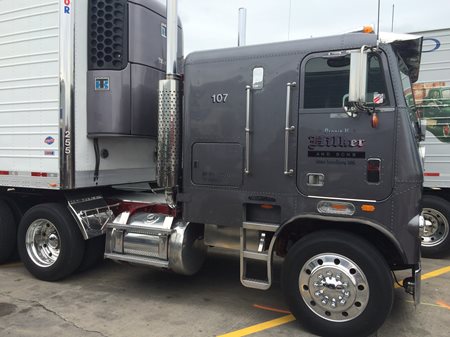Two of the bigger costs in the trucking industry are fuel and tires. They are what eat into your profits more than anything else, and so any time that you can improve either of them, your company will be better for it. Fortunately, if you take the time to make sure that your tires are wearing properly, then you will also improve your fuel economy at the same time. Here are some tips that will help you to save time, money, fuel, and tire life.
Ensure Proper Tire Inflation
This is a no-brainer. Just about every truck driver out there knows that an underinflated tire is wearing out faster, and is downright dangerous to use. The reason it is the first item on our list is that so many drivers don’t seem to pay attention to their tires or make sure that they are properly inflated.
When you are inspected, you want to make sure that your rig is in top shape so you aren’t wasting time doing costly repairs, or wasting money with fines. But did you know that there are thousands of trucks on the road that are running on underinflated tires? Some even on flat tires?

Instead of leaving things to chance, invest in a
Tire Pressure Monitoring System (TPMS). All new cars come with these built in; there is no reason that your truck shouldn’t have one either. The way it works is simple. When the pressure gets low in one of your tires, an alert is sent wirelessly to the transceiver. You’ll then know that it is time to check the pressure in your tires at your next stop.
Properly inflated tires will ensure the least amount of drag when you are travelling. Less drag leads to better fuel economy.
Use the Right Tires
Generally speaking, you likely haul the same loads every trip, or at least something very similar. So you know what kind of tires you need for your truck and trailer.
But when was the last time you looked at tire technology? It changes all the time as different rubbers are being discovered, and new ways of making the tires are being incorporated. The tires you were using for the last 5 years are likely not the top of the line anymore.
For instance, you might benefit by switching to a
low rolling resistance tire. These tires have less tread on them, and therefore they have less drag. As we know less drag leads to better fuel economy. However, if you don’t make sure you have proper inflation, your investment in these tires will be negated.
Also Read: Prolonging Tire Life
Maintain Your Truck
You know the basics of maintenance, and you would never let something under the hood go without repairs. So why do many drivers ignore their trailers? Did you know that if you aren’t properly aligned, you could be losing 2% in your fuel economy? Let’s think about that for a minute.
Suppose you get 8 mpg on average. But you aren’t properly aligned. This means your fuel economy is 2% lower than it could be (add 2% and we get 8.16 mpg). It doesn’t seem like much, but it adds up. If you drive 50,000 miles per year, you are currently burning through 6,250 gallons of diesel every year. This costs you $18,750 (at $3 per gallon). A 2% improvement in fuel economy means that you save 123 gallons of diesel, or $369 per year. It doesn’t seem like a lot, but if you drive more, that number goes higher; if the price of fuel goes up, that number goes higher.
Obviously if you have a severe alignment issue, then you are experiencing even more than 2% loss in fuel economy.
Slow It Down
The key to making a living is to get to your destination quickly so that you can turn around and get to the next destination quickly. But did you know that every mile per hour over 55 can result in a 2% reduction of fuel economy? That means going 55 mph, instead of 65mph, you get 20% better mpg. Of course that means you spend more time on the road.
More hours driving, or spend more on fuel (and subsequently more on tires that wear out faster). Which do you prefer?
Wrapping It Up
Improving your fuel economy is tricky since there are a lot of variables. If you do just one, you probably won’t see much of an improvement. However, if you take into account all of these tips, you could see your miles per gallon improve by 25% or more.
Wouldn’t we all like to work the same amount, but be 25% more efficient?